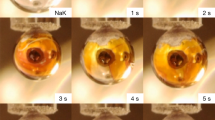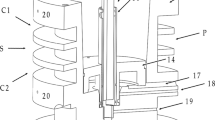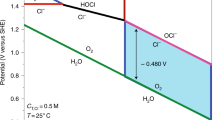Abstract
WE have recently made some preliminary investigations of the effect of various factors on the efficiency of the concentration of diplogen by electrolysis in alkaline solution. The diplogen-hydrogen ratio at various stages was determined by specific gravity measurements after repeated distillation. These measurements were carried out in pyknometers of 5 c.c. and 25 c.c. capacity with an estimated accuracy of one part in a hundred thousand. In calculating the diplogen concentrations, we have used Lewis's1 value for the specific gravity of pure D2O and Bleakney and Gould's2 estimate of the D/H ratio in ordinary water.
This is a preview of subscription content, access via your institution
Access options
Subscribe to this journal
Receive 51 print issues and online access
$199.00 per year
only $3.90 per issue
Buy this article
- Purchase on Springer Link
- Instant access to full article PDF
Prices may be subject to local taxes which are calculated during checkout
Similar content being viewed by others
References
G. N. Lewis and R. T. Macdonald, J. Amer. Chem. Soc., 55, 3057 ; 1933.
W. Bleakney and A. J. Gould, Phys. Rev., 44, 265 ; 1933.
G. N. Lewis and R. T. Macdonald, J. Chem. Phys., 1, 341 ; 1933.
R. W. Gurney, Proc. Roy. Soc., A, 134, 137 ; 1931.
A. Sherman and H. Eyring, J. Chem. Phys., 1, 345 ; 1933.
Author information
Authors and Affiliations
Rights and permissions
About this article
Cite this article
BELL, R., WOLFENDEN, J. Electrolytic Concentration of Diplogen. Nature 133, 25–26 (1934). https://doi.org/10.1038/133025a0
Issue Date:
DOI: https://doi.org/10.1038/133025a0
This article is cited by
-
Über den gegenwärtigen Stand unserer Kenntnisse vom schweren Wasserstoff und dem schweren Wasser
Protoplasma (1935)
-
Electrolytic Concentration of the Heavy Hydrogen Isotope
Nature (1934)
-
Idrogeno pesante ed acqua pesante
Il Nuovo Cimento (1934)
Comments
By submitting a comment you agree to abide by our Terms and Community Guidelines. If you find something abusive or that does not comply with our terms or guidelines please flag it as inappropriate.



